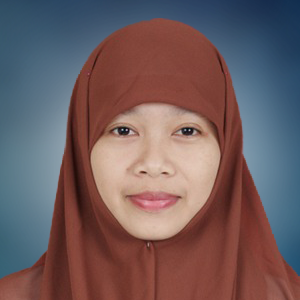KELAS EDUKASI ANTENATAL BERBASIS KETERAMPILAN MENINGKATKAN EFIKASI DIRI IBU HAMIL DALAM MENGHADAPI PERSALINAN
Abstract
Persiapan fisik dan mental ibu hamil menghadapi persalinan dapat didapatkan melalui kegiatan kelas ibu hamil. Melalui kelas ibu hamil, ibu akan dibimbing untuk selalu berpikir optimis dalam menghadapi persalinan yang membuat efikasi diri ibu semakin bertambah dalam menghadapi persalinan. Edukasi antenatal yang diberikan seperti tanda persalinan, persiapan persalinan, hal-hal apa yang bisa ibu lakukan dalam fase persalinan untuk mengoptimalkan posisi janin melalui prenatal yoga, mempraktikkan cara mengatasi nyeri persalinan, latihan relaksasi serta mengolah emosi di masa persalinan. Tujuan penelitian ini untuk mengetahui pengaruh kelas edukasi antenatal berbasis keterampilan terhadap efikasi diri ibu hamil. Penelitian ini menggunakan rancangan experimen semu (quasy experiment) dengan design one group pretest posttest. Perlakuan yang diberikan yaitu edukasi persiapan persalinan berbasis keterampilan sebanyak 1 kali setiap minggu dalam 4 minggu dengan durasi 60 menit setiap treatment. Hasil uji statistik dependen T-Test diperoleh p value = 0,001 artinya ada perbedaan efikasi diri ibu hamil sebelum dan sesudah mengikuti kelas edukasi antenatal berbasis keterampilan. Perbedaan efikasi diri ibu hamil ditunjukkan dengan rata-rata nilai efikasi diri ibu hamil sebelum perlakuan yaitu 118,50. Pengukuran rata-rata nilai posttest efikasi diri yaitu 136,75. Terdapat peningkatan nilai mean/rata-rata efikasi diri ibu hamil dalam menghadapi persalinan sebesar 18,25.
Kata kunci: kelas ibu hamil, efikasi diri ibu hamil, manajemen nyeri, optimalisasi posisi janin, relaksasi, ibu hamil trimester III
Keywords
Full Text:
PDFReferences
Alizadeh-Dibazari, Z., Abdolalipour, S., & Mirghafourvand, M. (2023). The effect of prenatal education on fear of childbirth, pain intensity during labour and childbirth experience: a scoping review using systematic approach and meta-analysis. BMC Pregnancy and Childbirth, 23(1), 541.
AlSomali, Z., Bajamal, E., Esheaba, O., & AlSomali, Z. A. (2023). The Effect of Structured Antenatal Education on Childbirth Self-Efficacy. Cureus, 15(5).
Aprillia, Y. (2017). # Bebastakut Hamil Dan Melahirkan. Gramedia Pustaka Utama.
Aprillia, Y. (2020). Prenatal Gentle Yoga: Kunci Melahirkan dengan Lancar, Aman, Nyaman, dan Minim Trauma. Gramedia Pustaka Utama.
Brixval, C. S., Axelsen, S. F., Thygesen, L. C., Due, P., & Koushede, V. (2016). Antenatal education in small classes may increase childbirth self-efficacy: results from a Danish randomised trial. Sexual & Reproductive Healthcare, 10, 32–34.
Byrne, J., Hauck, Y., Fisher, C., Bayes, S., & Schutze, R. (2014). Effectiveness of a mindfulness‐based childbirth education pilot study on maternal self‐efficacy and fear of childbirth. Journal of Midwifery & Women’s Health, 59(2), 192–197.
Fidora, I. (2019). Ibu Hamil dan Nifas dalam Ancaman Depresi. Pena Persada.
Gourounti, K., Kouklaki, E., & Lykeridou, K. (2015). Validation of the Childbirth Attitudes Questionnaire in Greek and psychosocial characteristics of pregnant women with fear of childbirth. Women and Birth, 28(3), e44–e51.
Kartini, F. (2021). Edukasi Holistik Meningkatkan Self Efficacy Ibu Menghadapi Persalinan. Deepublish.
Kartini, F., Emilia, O., Dasuki, D., & Prabandari, Y. S. (2019). Developing Indonesian version of childbirth self-efficacy inventory (Cbsei)-C32.
Leutenegger, V., Grylka-Baeschlin, S., Wieber, F., Daly, D., & Pehlke-Milde, J. (2022). The effectiveness of skilled breathing and relaxation techniques during antenatal education on maternal and neonatal outcomes: a systematic review. BMC Pregnancy and Childbirth, 22(1), 1–19.
Ma, X., Yue, Z.-Q., Gong, Z.-Q., Zhang, H., Duan, N.-Y., Shi, Y.-T., Wei, G.-X., & Li, Y.-F. (2017). The effect of diaphragmatic breathing on attention, negative affect and stress in healthy adults. Frontiers in Psychology, 8, 234806.
Marini, S., Parma, D., Masini, A., Bertini, V., Leccese, V., Caravita, I., Gori, D., Messina, R., & Dallolio, L. (2021). Co-design and evaluation of the feasibility and the efficacy of a multiple-targeted adapted physical activity intervention to promote quality of life, well-being and physical activity levels in pregnant women: the “WELL-DONE!” study protocol. Sustainability, 13(21), 12285.
Nurpratiwi, Y., Hadi, M., & Idriani, I. (2020). Teknik Rebozo terhadap Intensitas Nyeri Kala I Fase Aktif dan Lamanya Persalinan pada Ibu Multigravida. Jurnal Keperawatan Silampari, 4(1), 293–304.
Prawirohardjo, S. (2016). Ilmu Kebidanan. Yayasan Bina Pustaka.
Rosiana, I. G. A. P. D., Edwina, O. I. P., & Fun, L. F. (2022). Konseling Individual untuk Meningkatkan Self-Efficacy Belief pada Ibu Hamil Primigravida Trimester Kedua di Klinik “X” Bandung.
Salomonsson, B., Berterö, C., & Alehagen, S. (2013). Self‐efficacy in pregnant women with severe fear of childbirth. Journal of Obstetric, Gynecologic & Neonatal Nursing, 42(2), 191–202.
Saputri, N. N. T. (2021). HUBUNGAN KEIKUTSERTAAN KELAS IBU HAMIL DAN DUKUNGAN SUAMI DENGAN EFIKASI DIRI IBU MENGHADAPI PERSALINAN.
Schwartz, L., Toohill, J., Creedy, D. K., Baird, K., Gamble, J., & Fenwick, J. (2015). Factors associated with childbirth self-efficacy in Australian childbearing women. BMC Pregnancy and Childbirth, 15(1), 1–9.
Soh, Y. X., Razak, N. K. B. A., Cheng, L. J., & Ying, L. A. U. (2020). Determinants of childbirth self-efficacy among multi-ethnic pregnant women in Singapore: a structural equation modelling approach. Midwifery, 87, 102716.
Tilden, E. L., Caughey, A. B., Lee, C. S., & Emeis, C. (2016). The effect of childbirth self-efficacy on perinatal outcomes. Journal of Obstetric, Gynecologic & Neonatal Nursing, 45(4), 465–480.
Tinius, R. A., Blankenship, M. M., Colao, A. M., Hawk, G. S., Perera, M., & Schoenberg, N. E. (2022). A Pilot Study on the Impact of the BumptUp® Mobile App on Physical Activity during and after Pregnancy. Sustainability, 14(19), 12801.
Toohill, J., Fenwick, J., Gamble, J., Creedy, D. K., Buist, A., Turkstra, E., & Ryding, E. (2014). A randomized controlled trial of a psycho‐education intervention by midwives in reducing childbirth fear in pregnant women. Birth, 41(4), 384–394.
Uluoz, E., Toros, T., Ogras, E. B., Temel, C., Korkmaz, C., Keskin, M. T., & Etiler, I. E. (2023). The Impact of Sustainable Exercise and the Number of Pregnancies on Self-Efficacy, Self-Esteem, and Assertiveness Levels in Pregnant Women. Sustainability, 15(11), 8978.
Wahyuningsih, A., & Wintoro, P. D. (2019). HUBUNGAN KEIKUTSERTAAN IBU HAMIL DALAM MENGIKUTI KELAS IBU HAMIL DENGAN PERSIAPAN MENGHADAPI PERSALINAN DI WILAYAH KERJA PUSKESMAS KARANGANOM KLATEN. INVOLUSI: Jurnal Ilmu Kebidanan, 9(2), 88–99.
DOI: https://doi.org/10.31983/jsk.v5i2.10699
Article Metrics
Refbacks
- There are currently no refbacks.



























